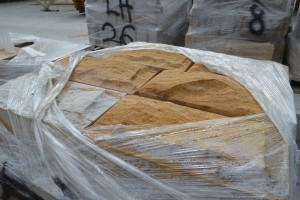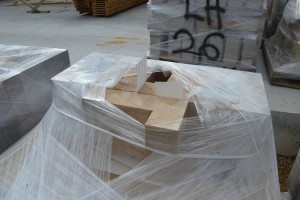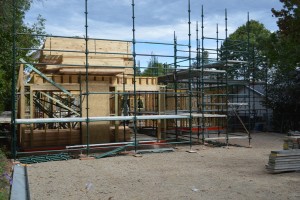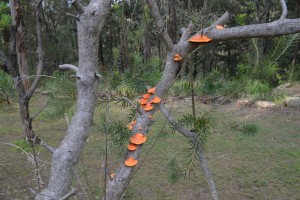 The weather here has been lovely, although after the rain this rather beautiful fungus has grown on one of our bottlebrush trees.
The weather here has been lovely, although after the rain this rather beautiful fungus has grown on one of our bottlebrush trees.
Building seems finally to be getting under way properly.
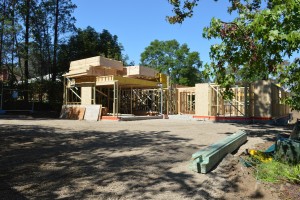 The frames for the downstairs area are going up, and some of the steel beams have been erected.
The frames for the downstairs area are going up, and some of the steel beams have been erected.
The frames for the upper storey have arrived also, and have been stored above the garage, as seen here!
Then earlier this week the sandstone has begun to arrive. I must say that I hadn’t realised that buying sandstone would be so complicated: what colour do you want (well, sandstone coloured ….?); do you want “rock face” or “hydrasplit”; are you having quoins? Quoins are the corner pieces, usually alternate directions long and short sides, standing out a little from the main stonework with smooth faces. Hydrasplit means that five of the sides of each block are smoothed to help construction, but the sixth is left rough. All six sides can be smoothed of course, but we felt building that way you might as well use concrete …. Rock face means that each edge of the stone is split back to give an even edge.
The main stonework is shown here, with the rock face visible, and the different colours that the bricks will be. There are also some pinker parts, but I couldn’t find a good piece not covered in plastic to take a picture of.
Here are some of the quoins.
There is quite a lot of scaffolding around the house now, ready for the stones to be made into walls, I suppose.

